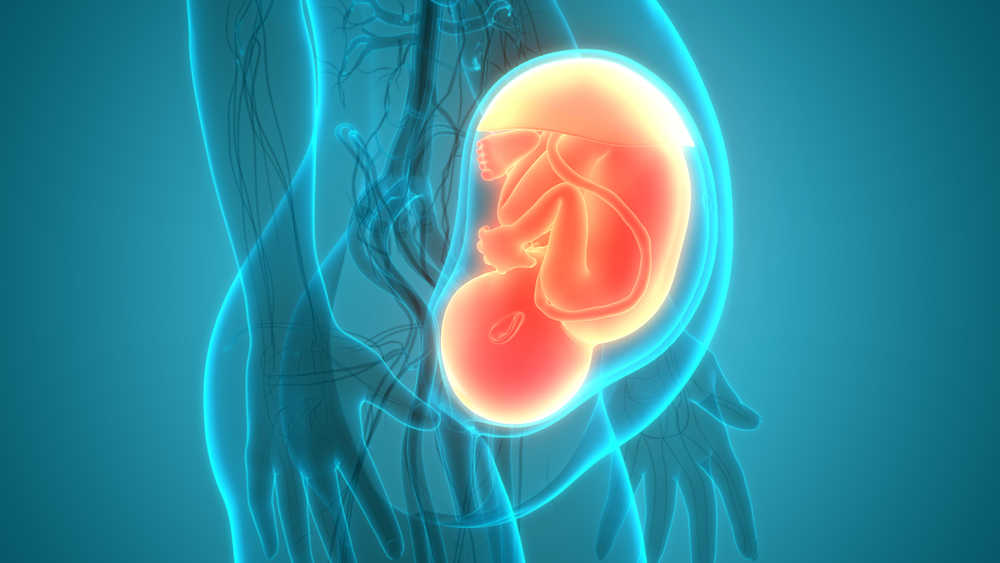Prenatal Treatment Offers Hope for Infants Born With Spinal Muscular Atrophy
Posted on Categories Discover Magazine

In a hopeful step for medicine, a 2-and-a-half-year-old child born with spinal muscular atrophy (SMA) has shown no symptoms of the genetic condition, all thanks to a gene-targeting drug that the mother took during late pregnancy.
A new study details this breakthrough case of prenatal therapy that holds promise for future treatment of the neurodegenerative disorder, which leads to the wasting of muscles over time and is usually diagnosed in infancy or early childhood.
Prenatal Treatment for Spinal Muscular Atrophy
So far, the child’s lack of symptoms comes as a successful result of the orally administered drug risdiplam, developed by pharmaceutical company Roche, based in Basel, Switzerland.
Risdiplam works by targeting the SMN2 gene to induce increased production of the survival motor neuron (SMN) protein; a deficiency of this protein is what causes the most common forms of SMA.
Treatment for SMA has commonly been administered after birth, but the new study demonstrates the potential for prenatal treatment as a viable option with more testing.
Read More: New Research Helps Us Understand Miscarriage and Placenta Development
Missing Proteins
SMA, estimated to occur in around 1 in every 6,000 to 1 in every 11,000 births in the U.S., can range in onset and symptoms.
Types 1 through 4 are linked to a mutation in both copies of the SMN1 gene (on chromosome 5), which leads to few or no full-length, functional SMN proteins produced. This can be partially offset by similar, neighboring SMN2 genes, but these genes produce lower levels of SMN protein, and its copies vary from person to person (individuals with SMA who have more than one or two copies of SMN2 generally exhibit a milder form of the condition).
The most severe form, type 1 or SMA-1 (making up 60 percent of SMA cases), shows up at birth or before 6 months of age. Babies with SMA-1 typically display symptoms like muscle weakness, a weak cry, and breathing distress, and many die before the age of 2.
Treatments that begin shortly after birth can improve survival and motor function in infants, but these have not been able to completely cure the disorder.
A Turning Point for Treatment
The new study is associated with the Pediatric Translational Neuroscience Initiative at St. Jude Children’s Research Hospital, launched to study the potential of in-utero treatment of a fetus with SMA-1.
According to a press release, both parents in the case were carriers of SMA genetic variants, and they previously had another infant child born with SMA-1 before current treatments were available, who died at 16 months of age.
The parents’ 2-and-a-half-year-old child, also born with SMA-1, has shown no features of the disorder. During the final six weeks of pregnancy, the mother took risdiplam daily. Treatment continued after birth, with the child continuing to take the drug. After birth, the child was diagnosed with three developmental abnormalities (a now-resolved ventricular septal defect, optic nerve hypoplasia, and a brainstem asymmetry), but these are all thought to have occurred early in fetal development before exposure to risdiplam.
Scientists at St. Jude are still monitoring the child for any developments, but so far, no signs of SMA have appeared. As a result, the study could potentially reflect a major turning point in SMA-1 treatment, addressing the disorder in the womb to control symptoms that would normally appear at or shortly after birth.
Article Sources
Our writers at Discovermagazine.com use peer-reviewed studies and high-quality sources for our articles, and our editors review for scientific accuracy and editorial standards. Review the sources used below for this article:
Jack Knudson is an assistant editor at Discover with a strong interest in environmental science and history. Before joining Discover in 2023, he studied journalism at the Scripps College of Communication at Ohio University and previously interned at Recycling Today magazine.